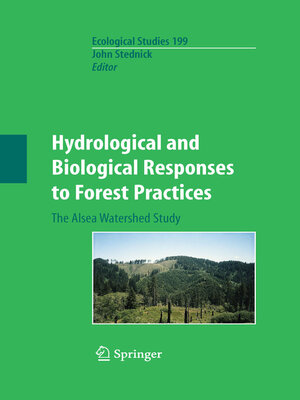Hydrological and Biological Responses to Forest Practices
ebook ∣ The Alsea Watershed Study · Ecological Studies
By John D. Stednick

Sign up to save your library
With an OverDrive account, you can save your favorite libraries for at-a-glance information about availability. Find out more about OverDrive accounts.
Find this title in Libby, the library reading app by OverDrive.



Search for a digital library with this title
Title found at these libraries:
| Loading... |
The Alsea Logging and Aquatic Resources Study, commissioned by the Oregon Legislature in 1959, marked the beginning of four decades of research in the Pacific Northwest devoted to understanding the impacts of forest practices on water quality, water quantity, aquatic habitat, and aquatic organism popu- tions. While earlier watershed research examined changes in runoff and erosion from various land uses, this study was the first watershed experiment to focus so heavily on aquatic habitat and organism response to forest practices. The Alsea Watershed Study, as it came to be known, extended over 15 years with seven years of pretreatment calibration measurements, a year of treatment, and seven years of post-treatment monitoring. The research was a cooperative effort with scientists from Oregon State University, Oregon Department of Fish and Wildlife, the U.S. Geological Survey, and the U.S. Environmental Protection Agency. Cooperating landowners included the Georgia-Pacific Corporation, the U.S. Forest Service, and a local rancher. It was a remarkable 15-year partnership marked by excellent cooperation among the participants and outstanding coordination among the scientists, many of whom participated actively for the entire period.






